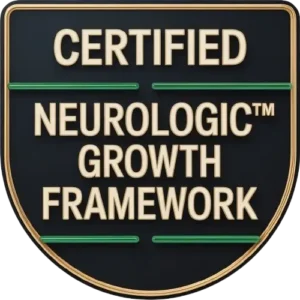
Introduction
In today’s world, a digital presence isn’t just an option—it’s a necessity for businesses looking to thrive. But diving into digital marketing without a clear plan can feel overwhelming, especially for small businesses. Don’t worry; this guide will help you create a powerful digital marketing strategy, one step at a time, to grow your business, attract customers, and achieve your goals.
Let’s get started!
1. Understand Your Target Audience
The foundation of any successful digital marketing strategy is knowing who you’re trying to reach. Without a clear understanding of your audience, your efforts will lack focus.
How to Identify Your Target Audience:
-
- Create Buyer Personas: Imagine your ideal customers. What are their demographics, interests, pain points, and buying habits? Use tools like HubSpot’s Buyer Persona Tool to create detailed profiles.
-
- Research Your Audience: Dive into analytics from your website, social media platforms, and email campaigns to see who’s engaging with your brand.
-
- Engage and Listen: Conduct surveys, read reviews, and engage with your audience to understand their needs better.
Example:
If you’re a bakery targeting young professionals, your audience might be health-conscious, prefer online ordering, and value sustainable packaging. Your strategy should reflect these insights.
2. Set SMART Goals
Setting goals is crucial, but they need to be more than vague aspirations. Enter SMART goals—goals that are Specific, Measurable, Achievable, Relevant, and Time-bound.
How to Set SMART Goals:
-
- Specific: “Increase website traffic by 20%” instead of “Get more traffic.”
-
- Measurable: Use analytics to track metrics like clicks, engagement, or conversions.
-
- Achievable: Set realistic goals that push your team without overwhelming them.
-
- Relevant: Focus on goals that align with your business’s growth.
-
- Time-bound: Set deadlines, e.g., “Achieve a 15% increase in email subscribers within three months.”
Example Goals:
-
- Grow Instagram followers by 10% in 60 days.
-
- Increase e-commerce sales by 15% in six months.
3. Choose the Right Digital Marketing Platforms
Every business is different, and not every platform is right for you. Focus on the channels where your audience is most active and likely to engage.
Key Platforms to Consider:
-
- Search Engine Optimization (SEO): Optimize your website to rank higher on Google. Use tools like Ahrefs or SEMrush to find relevant keywords.
-
- Social Media Marketing: Platforms like Instagram, LinkedIn, or Facebook can help you connect with your audience. Choose based on your target demographic.
-
- Email Marketing: Build a relationship with your audience through personalized email campaigns using tools like Mailchimp or ConvertKit.
-
- Pay-Per-Click (PPC): Run ads on Google or social media to target specific audiences and boost traffic.
Example:
A local boutique might focus on Instagram for visuals, Google My Business for local SEO, and email newsletters for loyal customers.
4. Create Valuable and Engaging Content
Content is the heartbeat of digital marketing. Whether it’s a blog, social media post, video, or email, your content needs to add value to your audience.
Content Types to Consider:
-
- Blog Posts: Write articles that solve customer problems (e.g., “Top 5 Wardrobe Tips for Professionals”).
-
- Videos: Engage your audience with short, visually appealing videos.
-
- Infographics: Present complex information in a visually digestible format.
-
- Social Media Posts: Share updates, tips, and behind-the-scenes moments.
Actionable Tips:
-
- Be Consistent: Post regularly to build trust and familiarity.
-
- Use Storytelling: Connect emotionally with your audience through relatable stories.
-
- Include CTAs: Every piece of content should encourage the reader to take action (e.g., “Shop now,” “Learn more”).
Example:
A real estate agent could create a video tour of a property and pair it with a blog post about buying your first home.
5. Measure Results with Analytics
A digital marketing strategy isn’t complete without monitoring performance. Analytics help you see what’s working, what’s not, and where you need to tweak your approach.
Tools to Track Performance:
-
- Google Analytics: Monitor website traffic, user behavior, and conversions.
-
- Social Media Insights: Platforms like Facebook and Instagram provide engagement metrics.
-
- Email Marketing Tools: Measure open rates, click-through rates, and conversions.
What to Measure:
-
- Traffic: How many people are visiting your site?
-
- Engagement: Are people interacting with your posts and emails?
-
- Conversions: Are visitors becoming customers?
Example:
If a particular blog post drives the most traffic, you can create more content around that topic to amplify success.
Pro Tips to Supercharge Your Strategy
-
- Leverage Automation: Use tools like Hootsuite to schedule posts or Zapier to automate repetitive tasks.
-
- Collaborate with Influencers: Partner with niche influencers who share your target audience.
-
- Optimize for Mobile: Ensure your website and emails are mobile-friendly.
-
- Test and Learn: Continuously A/B test your content, headlines, and ads to see what performs best.
Conclusion: Take the Leap!
Digital marketing might seem overwhelming, but with a solid strategy, it’s one of the most rewarding investments you can make for your business. Start by understanding your audience, set clear goals, and choose platforms that align with your needs. With patience and persistence, you’ll see results.
Remember: Every successful brand started small but dreamed big. You have the tools, now it’s time to take action. Start building your digital marketing strategy today and watch your business grow!
Are you ready to grow your business with digital marketing? Let’s do this now!

